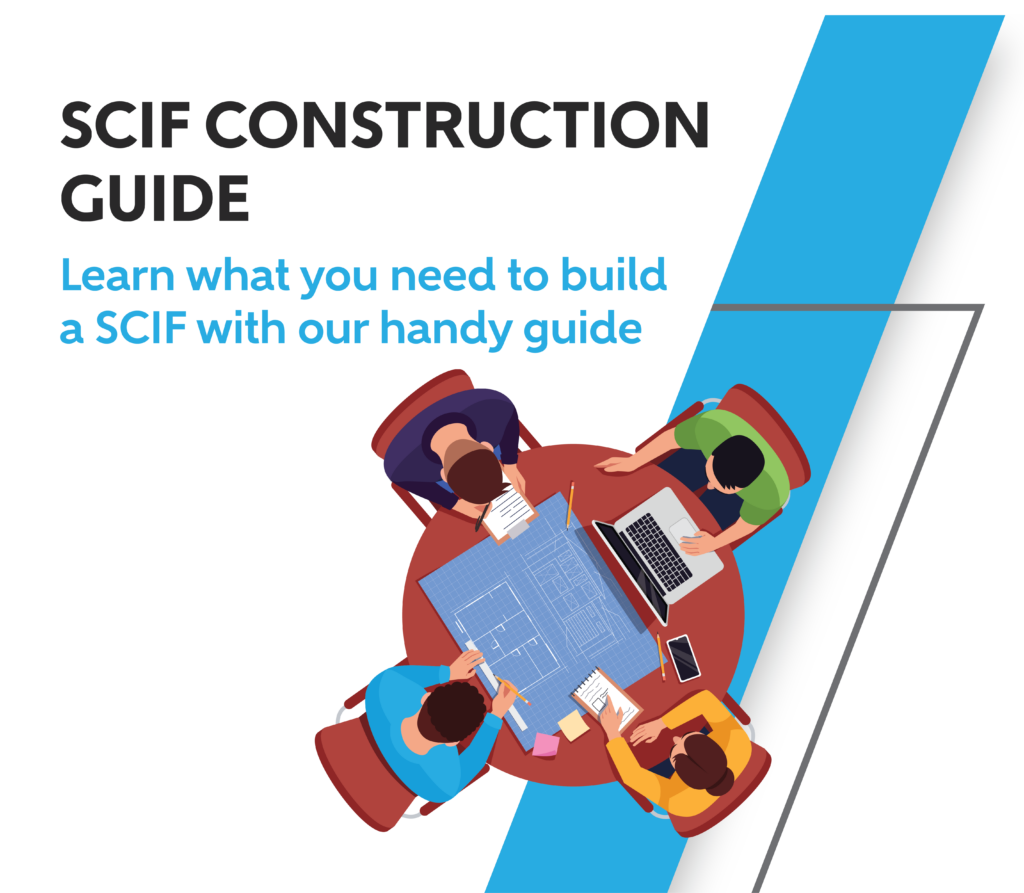How to cross the finish line with your SCIF or SAPF project
Accreditation is the ultimate end point of SCIF or SAPF construction. The last thing you want is to invest time and money into the construction only to stumble at the finish line and not have your facility accredited by your Accrediting Official (AO).

But the process of SCIF accreditation doesn’t begin when you finish your facility; you need to have it in mind from the beginning. You have to stay on top of elements like photo documentation from the start since you’ll be unable to photograph certain parts of your construction, like RF foil on the walls, at later stages. Being organized and keeping good documentation throughout the SCIF process can optimize your accreditation process and speed it up, making the steps you take early on crucial to your eventual accreditation.
Documentation
There are several documents you will need to turn into your AO as part of the accreditation process. You’ll need your construction security plan (CSP) completed in order to begin construction, and these will be part of your package later on. Start on documents like your Fixed Facility Checklist (FFC) and TEMPEST checklist from the beginning to make sure everything is documented. However, you won’t be able to finish them until your project is complete. These documents will include information such as your facility’s approach to physical security and utilization of sound mitigation and TEMPEST protections. The initial ICD 705-related security documentation package could take up to 90 days for government review after you submit it.
Related: Why Didn’t My SCIF or SAPF Get Accredited?
Another important piece is your “as-builts.” These plans show any ways that your final construction didn’t exactly follow the initial design plan. Construction jobs don’t typically follow the design exactly, so you’ll have some edits to add. Field conditions may not be what was assumed, causing you to have to adjust, or new needs arise, and changes are made as construction goes on. For example, you may have had to move a penetration in your facility, and you’ll need to note that for the AO. It’s key to document changes as they happen so that nothing is missed.
You may also need a Compartmented Area Checklist if your facility has any Compartmented Areas. This document is similar to the FFC. There are three types of Compartmented Areas described in the Tech Spec, and the checklist changes significantly depending on which type you have.
As you construct the SCIF, make sure to take photos of everything. There’s no such thing as too many photos. When it comes time to send the photos to the Accrediting Official (AO), you’ll want to send photos that show what you documented in your FFC and other documents, as these will likely be what the AO will want to focus on. The FFC and TEMPEST checklist can serve as guides for what you’ll need to photo document.
Final Inspection
Once you turn in your documents to your AO, they’ll review them and conduct a final inspection of your facility. They’ll make sure everything in your documentation aligns with the construction. The better your documentation, the more likely it is your AO will feel confident that you’ve met the requirements for your secure facility.
If everything is in order, your SCIF will be added to the SCIF repository, which gives your facility its ID number, and you’ll receive an interim accreditation. With the interim accreditation, you’ll be able to begin operations within your facility pending the final approval.
This process can take anywhere from a few weeks to a few years, and this is dependent on your documentation as well as your AO’s trust in you and their availability. If you follow the process from the beginning and give your AO constant, continuing and clear information, you can optimize the accreditation process and help speed things along.
You can’t take chances when it comes to getting your facility accredited. Adamo can help guide you through the secure facility construction process from pre-design to accreditation, and with our 100% accreditation rate, you know you can trust us with your project. Contact us today to learn more.




